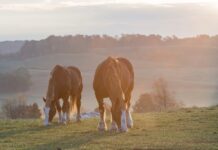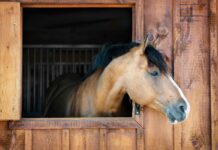Last but not least, the hindgut
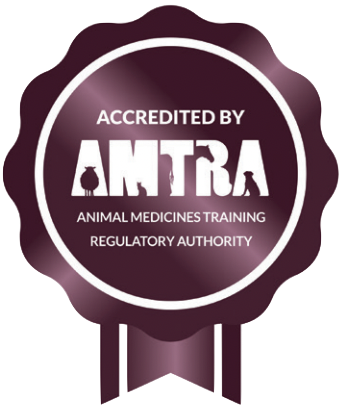
By Hannah Elliott, Monogastric Technical Manager, Lallemand Animal Nutrition UK and Ireland.
AMTRA is required by the Veterinary Medicines Regulations to ensure its RAMAs/SQPs undertake CPD. All RAMAs/SQPs must earn a certain number of CPD points in a given period of time in order to retain their qualification. RAMAs/SQPs who read this feature and submit correct answers to the questions below will receive two CPD points. For more about AMTRA and becoming a RAMA/SQP, visit www.amtra.org.uk
The gastrointestinal tract of a horse plays a crucial role in meeting energy requirements whilst maintaining health and welfare. The gut microbiota drives fermentation for feed digestion and energy metabolism while constantly interacting with host cells to regulate immunity and inflammatory pathways. Equine feeding and management strategies, transportation and the use of wormers can all impair gut microbial balance and can consequently impact health and welfare. This often manifests in digestive/systemic disorders with stereotypic behaviours. Many pathologies are directly linked to the hindgut such as laminitis, sweet itch, colic and diarrhoea. There is much we still don’t know about the hindgut given differences in research methodologies, small sample sizes, individual variation and ethics limitations. However, we do know that proper equine gut digestive function fundamentally relies on forage, crucially the fibre component.
As a herbivorous hindgut fermenter, the capacity and transit time of the horses’ hindgut far outweighs the rest of the digestive tract. The colon alone represents around 50% of total gastrointestinal tract volume. There are no digestive enzymes secreted by the horse’s hindgut and so functionality is solely focused on the microbial populations present which include bacteria, fungi and protozoa. Very few protozoa and fungi are found in the rest of the gastrointestinal tract and while there are bacteria present within the stomach and small intestine, they are 100x more prevalent within the hindgut; hence most microbial digestion of fibre takes place within the caecum and colon. The microbial population within the hindgut is essential
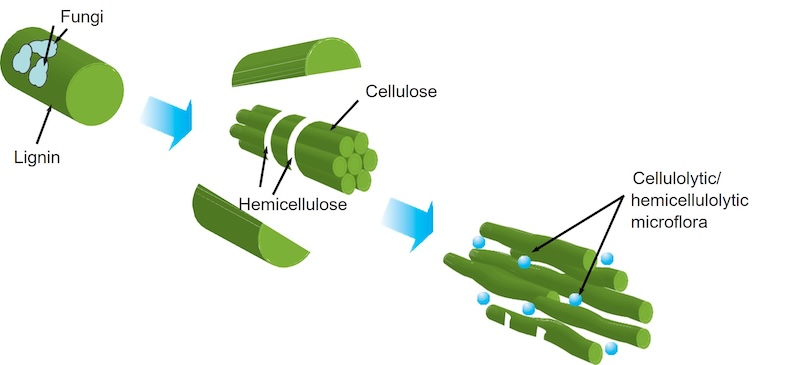
for horse health and there is a delicate balance between species. The digestion of fibre relies on fungi to break down lignin, then protozoa and bacteria, to ferment the complex carbohydrates into short chain fatty acids (SCFAs). Very little published data is available on the specific function of fungal and protozoal populations, but the main bacterial species present are Firmicutes (importantly Clostridiales) and Bacteroidetes.
Forage first
General feeding guidelines based on literature state that horses should consume 2% of their body weight in dry matter per day, at least 65% of which should be structural fibre. They should chew/eat for 12-13 hours over a 24-hour period with 8 hours being the absolute minimum. Forage should be available ad-lib to fulfil chewing behaviour, gut fill, energy requirements via SCFA production and to support good microbial balance within the hindgut. Horses are very efficient at digesting low quality feed, and this is why forage is essential for an appropriate equine diet. The insoluble fibre found in forage is capable of providing 80% of a horse’s energy requirement via microbial fermentation, irrespective of dietary starch and sugar. Horses are designed to get most of their energy from SCFAs: more specifically the 3 volatile fatty acids butyrate, acetate and propionate. The microbiota composition within the gut can adapt and reflect the diet fed. The more forage fed to a horse, the more efficient the microbial population becomes at breaking down forage into SCFAs for energy. Too little fibre can decrease passage rates and a reduction in SCFA production (due to reduced fibre intake and therefore degradation) may increase oxygen presence within the hindgut as epithelial cells can increase their oxygen respiration. This can result in unwanted aerobic populations such as E. coli being supported, rather than strict anaerobic bacteria with fibrolytic activity for fibre degradation. It is worth noting that correct forage selection for the overweight or obese horse is essential. Although forage is required for gut fill and function, high energy or sugar dense forage such as perennial or timothy ryegrass, alfalfa or rich grass hay should be avoided.
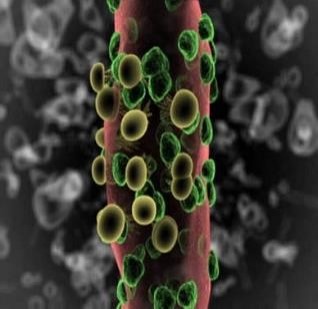
It is well known that we should not feed over 2g starch per kg body weight per meal. Glucose transporters in the small intestine can become more efficient over time, but there is a limit and an oversupply of starch will pass through into the hindgut. Starch will sustain negative bacterial populations, resulting in an increase in lactate production and subsequently lactate absorption into the blood. Increased lactate presence reduces the pH of the gut, which can lead to acidosis, and reduce hindgut microbial diversity. Positive cellulolytic bacteria and fungi will also die off releasing toxins, resulting in increased gut permeability. Hence why it is more appropriate to increase fat content within a diet rather than starch and sugars for higher energy requirements. Feeding a high starch concentrate meal before a large amount of forage, can increase passage rates and result in more starch passing into the hindgut, therefore forage should always be available before concentrate is fed.
Microbial imbalance
There are many factors which can affect microbial balance within the hindgut. After birth, foals acquire their gut microbiota from their dam and the environment within the first 2 months of age. Faecal, colostrum/milk and solid feed consumption play an important role in promoting early microbiota development and balance, with a noticeable shift in microbiota populations seen at weaning. Foals are susceptible to digestive disorders since the gastrointestinal tract is still developing and growth has a high nutrient requirement. Wormers, transport and high-performance have also been implicated in affecting gut microbiota balance and causing a decrease in the diversity/relative abundance of the microbial community. The redistribution of blood flow away from the intestines during intense exercise, the interaction of the gut-brain axis in relation to physical stress and oxygen release into the hindgut from epithelial cells in response to inflammation and oxidative stress, can all impact microbial balance. Besides energy production and the importance of SCFA production, gut morphology, mucus membrane functionality, nutrient absorption and adequate gut barrier function are all related to the microbial population and level of digestive disturbance within the gut. A diet adequate in fibre with no starch passage into the hindgut will help maintain these beneficial microbes. Even in death the microbial populations are functional as they provide an amino acid source for the horse to utilise.
A role for probiotic yeast
Several strategies have been developed to prevent microbial disturbance within the equine intestine, especially when this stress can be predicted. One commonly adopted strategy is to include probiotics such as live yeast, in the diet. Live yeast can improve feed value by stimulating the growth of anaerobic fibrolytic (fibre digesting) microorganisms including the activity of cellulolytic and hemicellulolytic bacteria. By competing with undesirable bacteria for sugars and other nutrients and producing metabolites such as amino acids and B-vitamins, live yeast can also promote and support the growth of endogenous microbes and in turn balance gut pH. As the density of beneficial bacteria and fungi is increased, the colonization of fibre is enhanced, increasing fibre fermentation.Enhanced colonisation
of alfalfa particles by B. fibrisolvens and R. flavefaciens has even been observed whilst using a specific probiotic yeast. Many studies have also demonstrated the benefits of feeding a live yeast for microbiota support, stabilising microbial richness within stressful situations such as during transport, improving faecal quality, supporting foal growth and even helping to enhance dam colostrum quality which will have a positive impact on foal development.
Conclusion
Modern horse husbandry and feeding practices don’t always support the natural feeding behaviour and physiology of a horse’s gut. Although much is unknown about the microbiome within the hindgut, it is abundantly clear that if digestive function and microbiota balance are impaired, various health issues can manifest and consequently affect health and welfare. The importance of forage must not be overlooked when feeding and fibre must be prioritised. Live yeast supplementation is increasingly used to help to support gut microbial balance and can contribute towards efficient horse digestion as part of a complete diet.

ABOUT ETN’S RAMA/SQP FEATURES
ETN’s series of CPD features helps RAMAs (Registered Animal Medicines Advisors/SQPs) earn the CPD (continuing professional development) points they need. The features are accredited by AMTRA, and highlight some of the most important subject areas for RAMAs/SQPs specialising in equine and companion animal medicine.
AMTRA is required by the Veterinary Medicines Regulations to ensure its RAMAs/SQPs undertake CPD. All RAMAs/SQPs must earn a certain number of CPD points in a given period of time in order to retain their qualification. RAMAs/SQPs who read this feature and submit correct answers to the questions below will receive two CPD points. For more about AMTRA and becoming a RAMA/SQP, visit www.amtra.org.uk






